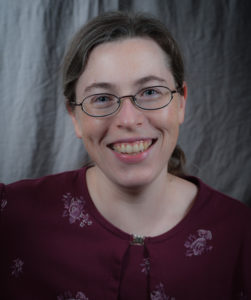“Imminent Shaking”: What Kind of Earthquake Warning is Possible? – S. Minson; WCC Event 2/15/2020
Add to Calendar
When:
February 15, 2020 @ 10:30 am – 1:00 pm
America/Los Angeles Timezone
2020-02-15T10:30:00-08:00
2020-02-15T13:00:00-08:00
Where:
USDA - Albany
800 Buchanan St
Berkeley
CA 94710
800 Buchanan St
Berkeley
CA 94710
Cost:
$15
Contact:
Bio:
Sarah Minson is a research geophysicist with the U.S. Geological Survey’s Earthquake Science Center. Her research interests include using probabilistic inference for seismological problems such as determining the physics of earthquake ruptures, and estimating the slip distribution and predicting the ground motion from earthquakes in real-time for earthquake early warning. She received her B.A. from the University of California, Berkeley, and M.S. and Ph.D. degrees from the California Institute of Technology. Prior to her current position, she was a Mendenhall post-doctoral fellow with the U.S. Geological Survey as well as a post-doctoral fellow at the California Institute of Technology. She is a winner of the Presidential Early Career Award for Scientists and Engineers (PECASE) and a Kavli Fellow (National Academy of Sciences and The Kavli Foundation). More info: https://www.usgs.gov/staff-profiles/sarah-minson
“Imminent Shaking”: What Kind of Earthquake Warning is Possible?
The United States is developing ShakeAlert, an earthquake early warning system that
will provide California, Oregon, and Washington with advanced warning of potentially
damaging shaking. The hopes for early warning systems are high, but the reality of what
can be expected from earthquake early warning is nuanced. Earthquakes don’t happen
in an instant and don’t tell us how big they will become. This means that any forecasts
that we make will be imperfect, and the amount of warning will be short: in many cases,
only a few seconds of warning will be possible. In spite of these limitations, there could
still be significant value to earthquake early warning, especially for people who are
willing to adopt a “better safe than sorry” strategy of taking protective action for
earthquakes that have only a small chance of causing damage. What kind of warning
system would you prefer? One that issues alerts for weak shaking, but also sends alerts
for many events that do not go on to produce strong shaking? Or an earthquake early
warning system that issues alerts only once ground shaking is expected to be
damaging, but there is an increased chance that the alerts could be issued too late?
During this talk, you will discover how an earthquake early warning system works, how
warnings are issued and how much warning is possible.
will provide California, Oregon, and Washington with advanced warning of potentially
damaging shaking. The hopes for early warning systems are high, but the reality of what
can be expected from earthquake early warning is nuanced. Earthquakes don’t happen
in an instant and don’t tell us how big they will become. This means that any forecasts
that we make will be imperfect, and the amount of warning will be short: in many cases,
only a few seconds of warning will be possible. In spite of these limitations, there could
still be significant value to earthquake early warning, especially for people who are
willing to adopt a “better safe than sorry” strategy of taking protective action for
earthquakes that have only a small chance of causing damage. What kind of warning
system would you prefer? One that issues alerts for weak shaking, but also sends alerts
for many events that do not go on to produce strong shaking? Or an earthquake early
warning system that issues alerts only once ground shaking is expected to be
damaging, but there is an increased chance that the alerts could be issued too late?
During this talk, you will discover how an earthquake early warning system works, how
warnings are issued and how much warning is possible.

